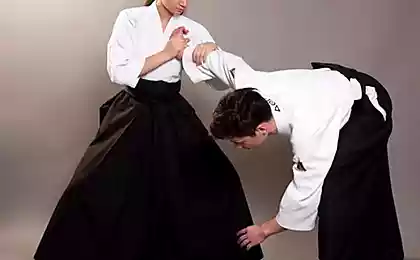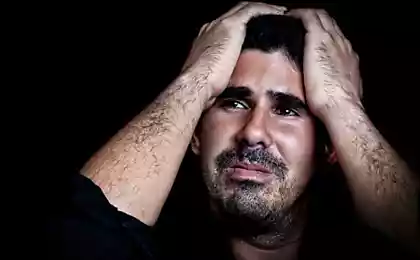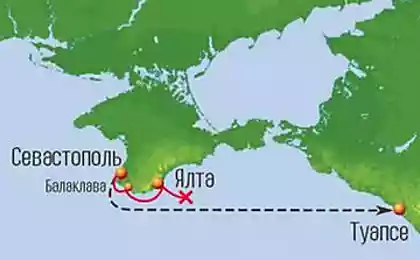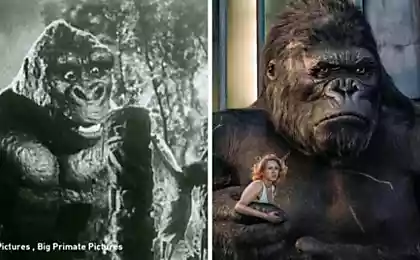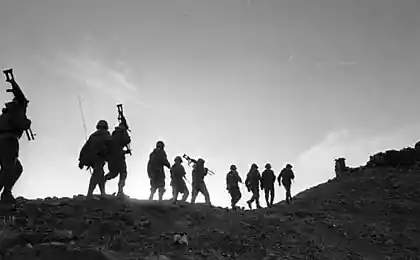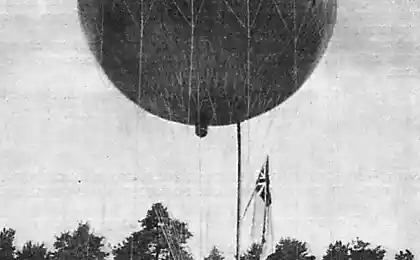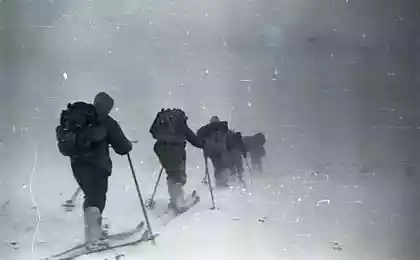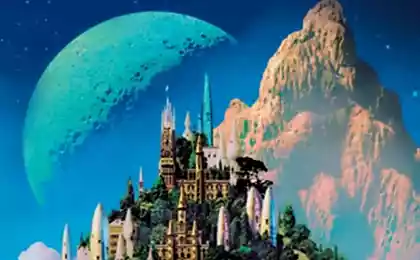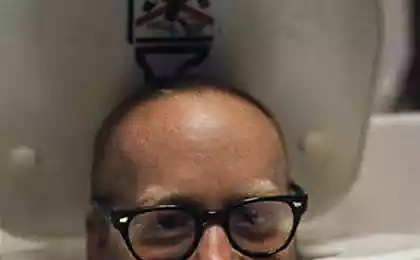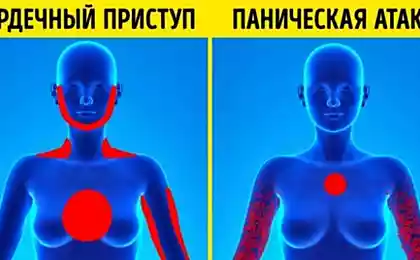626
Attack of the Dead
Why say that Russian do not surrender?
In 1915 the world looked with admiration on defense Osovets small Russian fortress in the 23, 5 km away from what was then East Prussia. The main task of the fortress was, as he wrote Defense party Osovets S. Hmelkov, "to block the enemy closest and most convenient way to Bialystok ... force the opponent to lose time or to conduct a prolonged siege, or to look for detours." Bialystok - transport hub, taking that opens the road to Vilna (Vilnius), Grodno, Minsk and Brest. So the Germans through Osovets lay the shortest route to Russia.

Fooling the fortress was impossible: it is located on the banks of the Beavers, controlling the whole area, in the vicinity - swamps. "In this area there are almost no roads, very few villages, individual households are communicated with each other on rivers, canals and narrow paths - describes terrain edition of People's Commissariat of Defense of the USSR as early as 1939. - The enemy will not find no roads, no shelter, no closures, no artillery positions. "
The first onslaught of the Germans launched in September 1914: throw the Konigsberg guns of large caliber, they bombarded the fort for six days. A siege Osovets began in January 1915 and lasted 190 days.
The Germans used the fortress of all their latest achievements. We delivered the famous "Big Bertha" - siege engines of 420-mm caliber, 800-kilogram bombs which breach the two-meter steel and concrete floors. Funnel from such an explosion was five meters deep and fifteen in diameter.
The Germans calculated that forced surrender of the fortress with a garrison of a thousand men only two such guns and 24 hours methodical bombing of 360 shells, every four minutes - volley. Under Osovets brought four "Big Bertha" and 64 other powerful siege engines, a total of 17 panels.
The most terrible enemy was at the beginning of the siege. "The enemy February 25 opened fire on the fortress, drove him on 27 and 28 February to the hurricane, and so went on to smash the castle until March 3," - recalled S. Hmelkov. According to his calculations, this week the horrific fire of the fortress was released only 200-250 thousand heavy shells. And all during the siege - up to 400 thousand. "The brick buildings collapsed, burned wood, weak given the huge concrete spalling in the vaults and walls; wire connection is interrupted, the highway ruined craters; trenches and all improvements on the shafts, such as - visors, machine-gun nests, light shelters - razed. " Above the fortress hovering clouds of smoke and dust. Together with the artillery fortress was bombed by German airplanes.
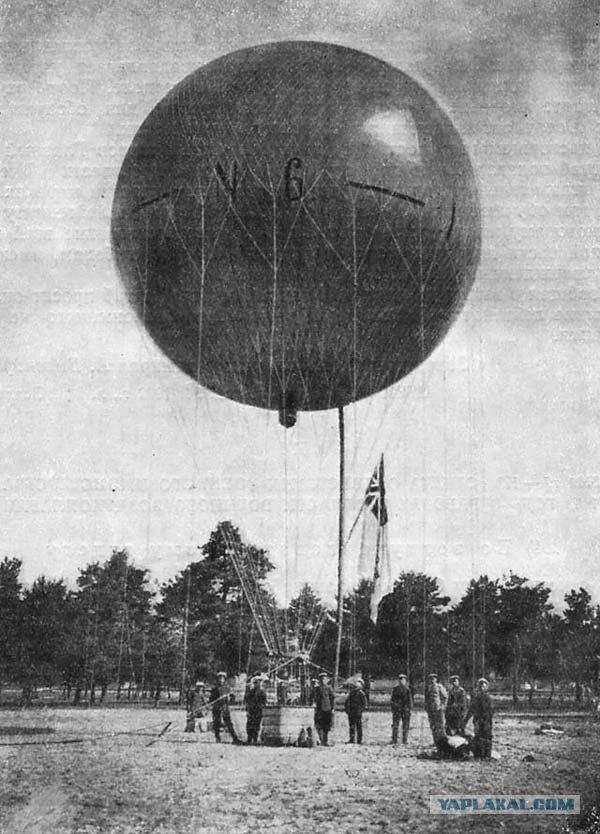
"Scary was kind of fortress, the whole castle was shrouded in smoke, through which the one or the other place of great tongues of fire erupted from the explosion of shells; the pillars of the earth, water and whole trees were flying up; the earth trembled, and it seemed that nothing could withstand such a hurricane of fire. The impression was that no one will come out of this whole hurricane of fire and iron "- so wrote foreign correspondents.
The command, assuming that requires almost impossible, asked the defenders to hold at least 48 hours. The fortress was still half a year. And our artillery during the terrible bombing even managed to knock two "Big Bertha" poorly disguised enemy. Along the way, and an ammunition dump blew up.

August 6, 1915 was the first for the defenders Osovets black day: to destroy the garrison of Germans used poison gas. Gas attack they prepared carefully, patiently waiting for the right wind. We have deployed 30 gas batteries, a few thousand bottles. August 6 at 4 am on Russian positions flowed dark green mist mixture of chlorine and bromine, which reached them for 5-10 minutes. Gas wave 12-15 meters in height and a width of 8 km penetrated to a depth of 20 km. Gas masks from the defenders were not.
"All living outdoors on the bridgehead fortress was poisoned to death - remember party defense. - All the greens in the fortress and in the immediate area of the path of the gas has been destroyed, the leaves on the trees yellowed, curled up and fell off, blackened grass and lay down on the ground, circled flower petals. All copper objects on the bridgehead fortress - part of the guns and shells, sinks, tanks, etc. - were covered with a thick layer of green oxide, chlorine; Food items that are stored without an airtight seal - meat, butter, bacon, vegetables, appeared intoxicated and unfit for consumption. " "Poluotravlennye trudged back - that's another writer - and thirsty, bending over to sources of water, but here on the lower ground gases trap and secondary poisoning leading to death." German artillery was re-opened massive fire after barrage and gas cloud to storm the Russian front lines moved 14 Landwehr battalions - which is no less than seven thousand infantry. Promoted after the gas attack survivors was hardly more than a hundred defenders. Doomed fortress seemed to have been in German hands. But when the German chain approached the trenches, from deep-green chlorine mist descended on them ... counter-attacking Russian infantry. The sight was horrifying: the men were in the bayonet with people wrapped in rags, shaken by a terrible cough, literally spitting out pieces of light on the bloody shirt. These were the remains of the 13th Company 226 th Infantry Regiment Zemlyansky, a little more than 60 people. But they plunged the enemy in such horror that the German infantry, not accepting the fight, rushed back, trampling each other, and hanging on the barbed wire of their own. And him with clubs wrapped chlorine batteries began to beat the Russian seemed to have deceased artillery. Several dozen half-dead Russian soldiers to flight three German infantry regiment! Nothing like the world did not know the art of war. This battle will go down in history as "Attack of the Dead."
Osovets Russian troops still left, but later on the orders of command when his defense lost its meaning. The evacuation of the fortress - is also an example of heroism. Because to export all of the fortress had at night, in the afternoon on the highway was impassable Grodno: it constantly bombed by German airplanes. But the enemy have left no cartridge or shell, or even a can of food. Each gun pulled on straps 30-50 artillery or militia. On the night of August 24, 1915 Russian sappers blew all that remained of the German fire, and a few days later, the Germans decided to take the ruins.
Source:
In 1915 the world looked with admiration on defense Osovets small Russian fortress in the 23, 5 km away from what was then East Prussia. The main task of the fortress was, as he wrote Defense party Osovets S. Hmelkov, "to block the enemy closest and most convenient way to Bialystok ... force the opponent to lose time or to conduct a prolonged siege, or to look for detours." Bialystok - transport hub, taking that opens the road to Vilna (Vilnius), Grodno, Minsk and Brest. So the Germans through Osovets lay the shortest route to Russia.

Fooling the fortress was impossible: it is located on the banks of the Beavers, controlling the whole area, in the vicinity - swamps. "In this area there are almost no roads, very few villages, individual households are communicated with each other on rivers, canals and narrow paths - describes terrain edition of People's Commissariat of Defense of the USSR as early as 1939. - The enemy will not find no roads, no shelter, no closures, no artillery positions. "
The first onslaught of the Germans launched in September 1914: throw the Konigsberg guns of large caliber, they bombarded the fort for six days. A siege Osovets began in January 1915 and lasted 190 days.
The Germans used the fortress of all their latest achievements. We delivered the famous "Big Bertha" - siege engines of 420-mm caliber, 800-kilogram bombs which breach the two-meter steel and concrete floors. Funnel from such an explosion was five meters deep and fifteen in diameter.
The Germans calculated that forced surrender of the fortress with a garrison of a thousand men only two such guns and 24 hours methodical bombing of 360 shells, every four minutes - volley. Under Osovets brought four "Big Bertha" and 64 other powerful siege engines, a total of 17 panels.
The most terrible enemy was at the beginning of the siege. "The enemy February 25 opened fire on the fortress, drove him on 27 and 28 February to the hurricane, and so went on to smash the castle until March 3," - recalled S. Hmelkov. According to his calculations, this week the horrific fire of the fortress was released only 200-250 thousand heavy shells. And all during the siege - up to 400 thousand. "The brick buildings collapsed, burned wood, weak given the huge concrete spalling in the vaults and walls; wire connection is interrupted, the highway ruined craters; trenches and all improvements on the shafts, such as - visors, machine-gun nests, light shelters - razed. " Above the fortress hovering clouds of smoke and dust. Together with the artillery fortress was bombed by German airplanes.

"Scary was kind of fortress, the whole castle was shrouded in smoke, through which the one or the other place of great tongues of fire erupted from the explosion of shells; the pillars of the earth, water and whole trees were flying up; the earth trembled, and it seemed that nothing could withstand such a hurricane of fire. The impression was that no one will come out of this whole hurricane of fire and iron "- so wrote foreign correspondents.
The command, assuming that requires almost impossible, asked the defenders to hold at least 48 hours. The fortress was still half a year. And our artillery during the terrible bombing even managed to knock two "Big Bertha" poorly disguised enemy. Along the way, and an ammunition dump blew up.

August 6, 1915 was the first for the defenders Osovets black day: to destroy the garrison of Germans used poison gas. Gas attack they prepared carefully, patiently waiting for the right wind. We have deployed 30 gas batteries, a few thousand bottles. August 6 at 4 am on Russian positions flowed dark green mist mixture of chlorine and bromine, which reached them for 5-10 minutes. Gas wave 12-15 meters in height and a width of 8 km penetrated to a depth of 20 km. Gas masks from the defenders were not.
"All living outdoors on the bridgehead fortress was poisoned to death - remember party defense. - All the greens in the fortress and in the immediate area of the path of the gas has been destroyed, the leaves on the trees yellowed, curled up and fell off, blackened grass and lay down on the ground, circled flower petals. All copper objects on the bridgehead fortress - part of the guns and shells, sinks, tanks, etc. - were covered with a thick layer of green oxide, chlorine; Food items that are stored without an airtight seal - meat, butter, bacon, vegetables, appeared intoxicated and unfit for consumption. " "Poluotravlennye trudged back - that's another writer - and thirsty, bending over to sources of water, but here on the lower ground gases trap and secondary poisoning leading to death." German artillery was re-opened massive fire after barrage and gas cloud to storm the Russian front lines moved 14 Landwehr battalions - which is no less than seven thousand infantry. Promoted after the gas attack survivors was hardly more than a hundred defenders. Doomed fortress seemed to have been in German hands. But when the German chain approached the trenches, from deep-green chlorine mist descended on them ... counter-attacking Russian infantry. The sight was horrifying: the men were in the bayonet with people wrapped in rags, shaken by a terrible cough, literally spitting out pieces of light on the bloody shirt. These were the remains of the 13th Company 226 th Infantry Regiment Zemlyansky, a little more than 60 people. But they plunged the enemy in such horror that the German infantry, not accepting the fight, rushed back, trampling each other, and hanging on the barbed wire of their own. And him with clubs wrapped chlorine batteries began to beat the Russian seemed to have deceased artillery. Several dozen half-dead Russian soldiers to flight three German infantry regiment! Nothing like the world did not know the art of war. This battle will go down in history as "Attack of the Dead."
Osovets Russian troops still left, but later on the orders of command when his defense lost its meaning. The evacuation of the fortress - is also an example of heroism. Because to export all of the fortress had at night, in the afternoon on the highway was impassable Grodno: it constantly bombed by German airplanes. But the enemy have left no cartridge or shell, or even a can of food. Each gun pulled on straps 30-50 artillery or militia. On the night of August 24, 1915 Russian sappers blew all that remained of the German fire, and a few days later, the Germans decided to take the ruins.
Source:
